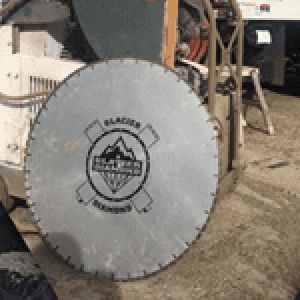How vacuum pads are used for surface conformance and swiveling action for versatile positioning?Posted by gdamerica on August 5th, 2022 Many things cannot be lifted with hands and are delicate to move. For these materials, we use a Vacuum Rubber Pad that is made of rubber and is usually used for lifting materials. The materials are mirrors or any other plain object that is fragile or sharp. These pads are engaged with the object and attached by creating a vacuum in between the space. The features of vacuum cups and vacuum cushions might include roars for surface conformity and spinning activity for flexible positioning. Vacuum cushions and cups pull in an object and attach to it with a fixed, applied vacuum. In collecting or examination procedures, the cushions are then turned on to raise, move, or position the workpiece. Specifications for Vacuum Cups and Vacuum Pads It's important to take into account variables like diameters or largest aspect, stroke (if appropriate), development materials, vacuum ports, and association while describing vacuum cups and vacuum cushions. The stroke refers to the duration of the withdrawal or lift stroke for a below-style type pad or a pad installed on retractable equipment. The construction material is what is utilized to create the physical pad. Some materials could be better suited to conditions including extreme heat, high vacuum, heavy loads, or synthetic materials. Consult the manufacturer for specifics on the features and applications of particular pad material. Elastic, silicone, vinyl, EPDM, neoprene, nitrile (NBR), polyurethane, and PVC are among the materials available. Two porting choices are the top port and side port. The cup or cushion is where the in-line or top port is located. There is a side port on the pad, which is occasionally utilized for applications that call for a small imprint. The options for the association are None, a cushion alone, Strung, Quick Interface, and Hose Spike. Types of Vacuum Cups and Vacuum Pads Among the most popular cup and pad types are standard, deep cup, oval, square, rectangle, bent, bellow, cleated, wipe, level, and ring vacuum. Vacuum pads known as standard cups are flexible and are typically employed in structures with several pads. The cup's greater depth facilitates some surface bend similarity. To ensure proper use when using level surfaces, verify with the manufacturer. The surface area of roundabout pads is less than that of oval pads. They are frequently used for translational freight because of their greater storage capacity. Square and rectangular pads and cups typically have their edges modified. Use cups and pads with bent profiles when working with hollow or rounded objects. Howls in the accordion form might provide level differentiation similarity or uneven surface congruity on the vacuum pads. Contracture howls can mimic a quick lifting stroke. Spiral spikes offer increased holding power. For uneven surfaces, foam or wipe pads provide a higher level of adjustability. Level pads are often quite large and cushioned with elastic when used to pick up enormously level objects, such that the grabbing surface is typically aligned up with the pad face. A draw part in a ring pad or cup has a circular path (or a non-circular edge); this device is frequently used to retain plates, such as CDs and DVDs. Optional Mounting The mounting capabilities of suction cups and vacuum pads frequently include spring mounting, turn or turn mounting, suspension mounting, or multi-point mounting. Spring attached cups and pads with vacuum withdrawal feature essentially introduced springs. A free pivot or turn mount is included in cups and pads with turn or turn mounts, accounting for accurate surface misalignment. For a suspension or multi-point mounting configuration, different mounts for a single pad are remembered; level consistency may be possible with separate springs. Larger pads often employ this mounting configuration. Other characteristics that attraction cups and Vacuum Rubber Pad have in common include food-grade materials, the adversary of static plans, and in-line channels for clean air supply. Working Process of Vacuum Pads Pull cups or vacuum cups are frequently utilized as grippers in manual or robotic handling applications. With their assistance, anything from jugs and packs to blocks and wooden sheets, sheet metal, lines, and glass windows could be obtained and carried. The workpiece makes touch with the vacuum framework through them. Standard vacuum handling equipment is crucial to many industries, including packaging, food and beverage, carpentry, metallurgy, the auto and semiconductor industries, and hardware. Vacuum cups provide several benefits in these applications, including the fact that they are typically transparent, small, light, reasonable, and low support. They can gently handle delicate components while still providing a firm hold in situations involving rapid movement. Here are some fundamentals of how they function. Howls renditions are frequently used for handling bowed materials such as vehicle body boards, lines, and cylinders, infused-shaped plastic pieces, nonrigid filled objects, or therapist-wrapped goods. Like it? Share it!More by this author |


